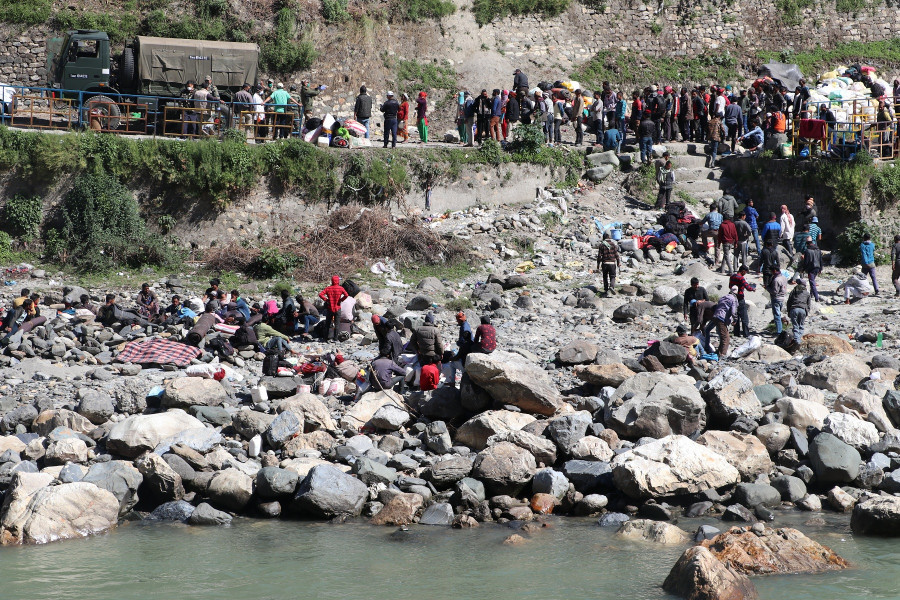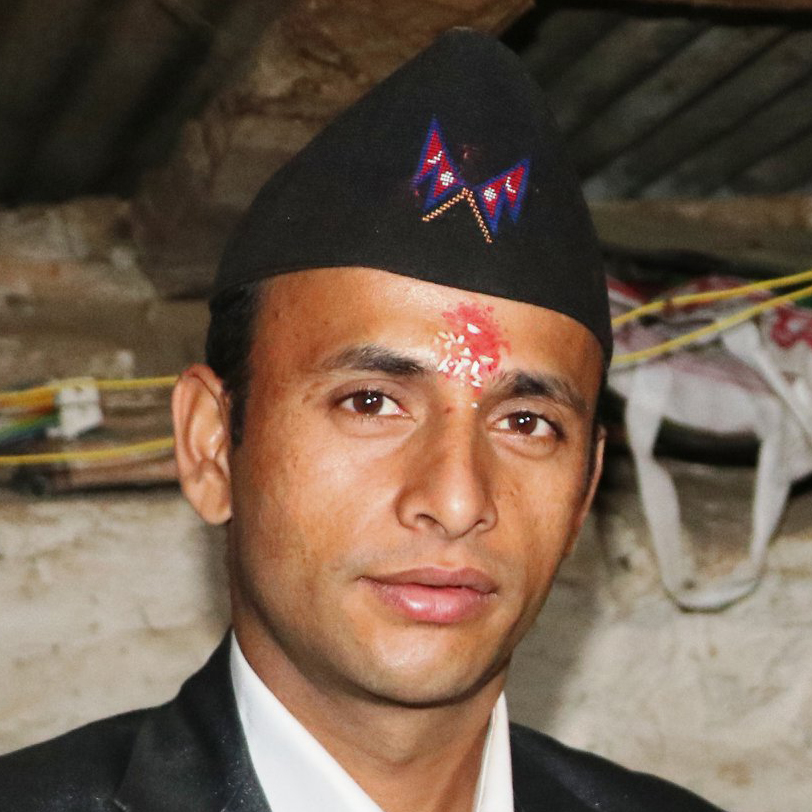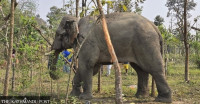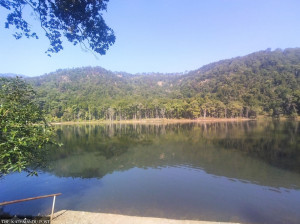Sudurpaschim Province
Lax health security checks in Darchula border points
There is no official record of entries through the other five border points in Darchula.
Manoj Badu
The flow of Nepali migrant workers returning to Darchula from Indian cities has increased in the past few weeks, according to the District Police Office in Darchula. However, out of the six Nepal-India border points in the district, only Pulghat border point in Khalanga, the district headquarters, has set up a health desk to run antigen tests on the returnees.
The migrant workers entering the country through five other border points—Tigram, Dattu, Jolajibi, Lali and Sitapul—have reached their native villages without any health check-up, say local residents.
Most returnees are from New Delhi where Covid-19 caseload has escalated beyond control in the last few weeks.
“Many returnees who had arrived in Khalanga from New Delhi and Mumbai during the Nepali New Year have already reached their villages. They weren’t following any health safety protocols,” Jaya Singh Raikhola, a local resident of Khalanga, told the Post. “Both the public and government authorities have become complacent.”
Over 2,000 individuals have entered Khalanga from Pulghat border point since the first week of April, according to the record of the District Police Office in Darchula. The police office does not have the data of entries through Tigram, Dattu, Jolajibi, Lali and Sitapul border points. However, the office estimates the number to be around 500 per day.
The District Health Office in Darchula, in coordination with the provincial government, started conducting antigen tests at Pulghat border point from March 29.
“Symptomatic returnees and those entering Khalanga from Covid-19-affected regions in India have to undergo an antigen test,” said Rajendra Singh Thagunna, a health assistant deployed at the health desk in Pulghat. “So far, over 60 antigen tests have been conducted. Out of them, only one individual showed symptoms of Covid-19. The patient has been admitted to the District Hospital for treatment.”
The local people say that although the official data reflects a low number of positive cases, returnees entering Darchula by crossing the Mahakali river on tuins and tyre tubes have not been accounted for.
“Many migrant workers are using wire crossings (tuins) and tyre tubes to cross the river to enter Darchula,” said Anil Karki, a local resident of Darchula. “This has increased the risk of a Covid-19 spread, as there’s no presence of security personnel in illegal border crossings.”
Last year, some migrant workers swam across the Mahakali River from India to enter Nepal during the nationwide lockdown. They were detained on the Nepali side of the border by security personnel from the Nepal Police and Armed Police Force.
“The flow of returnees from India has increased after the Nepali New Year. India is seeing a huge surge of Covid-19 cases and the situation is getting worse by the day. We can’t say that we are safe here,” said Jayaraj Bhatta, a public health officer in Darchula. “All of the concerned stakeholders and local people should adopt strict safety measures to limit the spread of the virus.”
According to the data of the District Health Office in Darchula, the district has reported only one Covid-19 case in the last three days. Migrant workers, primarily from Darchula, Baitadi and Bajhang districts in Sudurpaschim Province, use various border points in Darchula to enter Nepal from India.




 15.12°C Kathmandu
15.12°C Kathmandu












